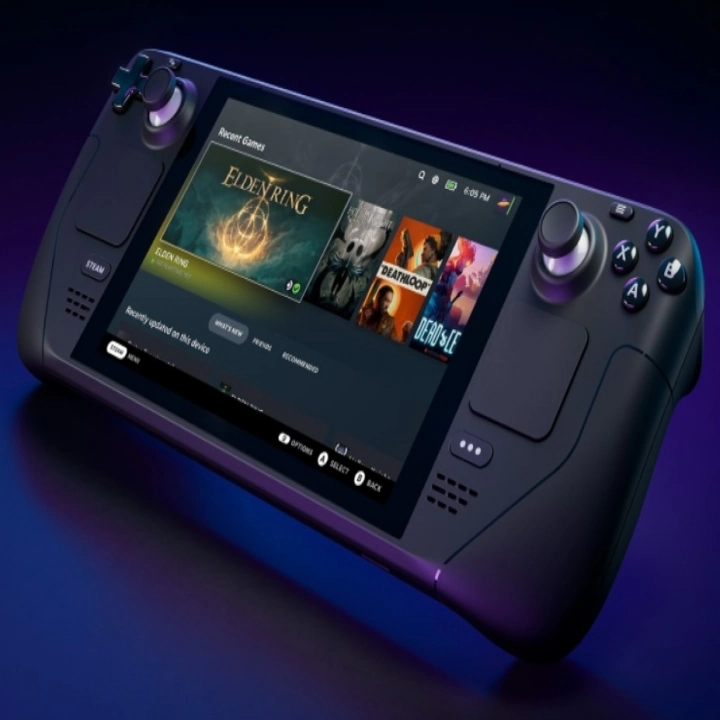Regression Testing on Real Devices: Ensuring Compatibility and Performance
In the dynamic world of software development, where quality, speed, and reliability are paramount, the significance of regression testing has soared. This process safeguards software integrity by verifying that new code alterations do not disrupt existing functionality. However, the surge in device and platform diversity has intensified the difficulty of guaranteeing compatibility and efficiency across real devices. This article navigates the domain of regression testing on tangible devices, illuminating conventional and cutting-edge methodologies that tackle these intricate challenges head-on.ing both traditional and advanced approaches to address these challenges.
Importance of Regression Testing in Software Development:
Regression testing is a cornerstone of software development that aims to validate that recent code changes have not introduced unintended bugs or broken existing features. It acts as a safety net, catching defects that may emerge due to code alterations. When software evolves, developers often modify existing code or add new features, inadvertently leading to unforeseen issues. Regression testing helps to identify these issues early in the development cycle, reducing the cost and effort of fixing bugs after deployment.
Challenges of Ensuring Compatibility Across Real Devices:
The digital world is teeming with a plethora of devices, each with unique configurations, screen sizes, operating systems, and hardware capabilities. Ensuring that software performs seamlessly across this myriad of devices is a formidable challenge. Developers face the dilemma of striking a balance between catering to the diversity of devices and maintaining a consistent user experience. Compatibility issues can manifest as display glitches, performance degradation, or even outright crashes. Addressing these challenges requires comprehensive testing methodologies that can simulate real-world usage scenarios.
Introducing Regression Testing on Real Devices:
Regression testing, when executed on real devices, offers a tangible approach to simulating real-world conditions. By testing on actual devices rather than emulators or simulations, developers can accurately assess how the software performs in the hands of users. This approach not only uncovers compatibility issues but also delves into the realm of performance, providing insights into how the software behaves under different conditions.
Section 1: Traditional Regression Testing Approaches:
Manual Regression Testing:
Manual regression testing involves human testers manually executing test cases on real devices. This approach involves a tester meticulously interacting with the software, mimicking user actions and monitoring the results. While this method allows for a deep exploration of the application’s functionality, it comes with inherent drawbacks. The process is time-consuming, prone to human errors, and lacks scalability. As the number of devices and test cases grows, manual testing becomes increasingly unfeasible.
Automated Regression Testing:
Automation has revolutionized the field of software testing, including regression testing. Automation tools can execute test scripts on real devices, mimicking user actions without the need for human intervention. This approach offers significant advantages in terms of speed, repeatability, and scalability. Automated tests can be run across various devices and configurations, ensuring a consistent and efficient testing process. However, maintaining these automated scripts across different devices can be challenging due to variations in device capabilities and behaviors.
Section 2: Top Regression Testing Approaches for Real Devices:
Real Device Testing: Device cloud platforms have emerged as a practical solution to the challenges posed by the diversity of real devices. These platforms provide remote access to a vast array of devices with different configurations, enabling testers to conduct regression testing across multiple devices without physically owning them. This approach ensures broader coverage and reduces the burden of device procurement and management. Device cloud testing is particularly valuable for organizations that need to validate their software’s compatibility across a wide range of devices, operating systems, and versions.
Parallel Testing: Parallel testing involves executing test cases simultaneously on multiple devices. This approach leverages the power of modern computing resources to expedite the testing process. By distributing tests across different devices, organizations can significantly reduce testing time, thereby accelerating the development lifecycle. Parallel testing not only enhances efficiency but also increases test coverage, as more devices are involved in the testing process. This approach is particularly effective in scenarios where quick feedback and shorter release cycles are essential.
Emulation and Simulation: Emulation and simulation are alternative approaches to regression testing when physical devices are not readily available. Device emulation involves replicating the behavior of real devices on a computer, while simulation creates a virtual environment to mimic real device interactions. While these approaches provide a cost-effective means of testing, they may not always replicate the nuances of real devices accurately. Emulators and simulators might miss out on hardware-specific bugs or performance bottlenecks that can only be identified on actual devices.
Real User Monitoring (RUM): Real User Monitoring (RUM) is a technique that involves collecting data from real users’ interactions with the software. It provides insights into how the software performs in real-world scenarios, capturing actual usage patterns, device types, and network conditions. RUM can be leveraged for regression testing by monitoring performance metrics across different devices and analyzing any deviations or anomalies. This approach not only identifies compatibility issues but also shines a light on performance bottlenecks that may affect user experience.
LambdaTest: Transforming Regression Testing on Real Devices
Section 3: LambdaTest – A Leading Regression Testing Solution
In today’s fast-paced world of software development, ensuring the quality and compatibility of applications across a multitude of devices and browsers is crucial. This article focuses on LambdaTest, a widely recognized and acclaimed solution that offers an effective way to perform regression testing on real devices. By providing access to thousands of real browsers and devices through a cloud-based platform, LambdaTest revolutionizes the way developers approach compatibility testing and enhances their regression testing workflows.
Overview of LambdaTest: LambdaTest is a cloud-based digital experience testing platform designed to help developers and quality assurance teams ensure the compatibility of their websites and native mobile applications across 3000+ test environments and real devices. . It eliminates the need for organizations to invest in an extensive collection of physical devices and infrastructure for testing, thus streamlining the testing process and improving time-to-market for software releases.
One of LambdaTest’s standout capabilitiy is its vast array of real browsers and real mobile devices on cloud available for testing. With LambdaTest, developers can gain access to thousands of combinations of browsers, operating systems, and devices. This comprehensive coverage ensures that applications are thoroughly tested on the most popular browsers and devices, as well as on niche configurations that might be used by a segment of the user base.
Benefits of Using LambdaTest for Regression Testing: Using LambdaTest for regression testing offers numerous advantages that contribute to more efficient and effective testing processes:
- Device Coverage: LambdaTest’s extensive device coverage ensures that developers can test their applications on a wide variety of real devices and configurations. This reduces the risk of compatibility issues arising when the application is accessed by users using different devices.
- Convenience: The cloud-based nature of LambdaTest eliminates the need for physical devices and local testing environments. Developers can access real devices directly from their browsers, facilitating remote testing and collaboration.
- Speed: Regression testing on real devices can be time-consuming, especially when manually testing across different configurations. LambdaTest’s parallel testing capability allows developers to run tests concurrently on multiple devices, significantly reducing testing time.
- Enhanced Regression Testing Workflows: LambdaTest provides integrations with popular testing frameworks and tools, enabling developers to seamlessly integrate regression testing into their existing workflows. This tight integration ensures that developers can catch regressions early in the development cycle.
Getting Started with LambdaTest: Setting up regression tests using LambdaTest is a straightforward process. Here’s a step-by-step guide to help developers get started:
- Sign Up and Log In: Create an account on the LambdaTest platform and log in to the dashboard.
- Select Devices and Browsers: Choose the specific devices, browsers, and operating systems you want to test your application on.
- Upload Application: Upload your application to LambdaTest. This can be done via the dashboard or by integrating LambdaTest’s APIs with your testing infrastructure.
- Configure Tests: Configure your test scenarios, which may include running automated scripts or manually interacting with the application.
- Run Tests: Start running your tests on the selected devices and browsers. LambdaTest’s parallel testing capability allows you to run tests concurrently on multiple devices, saving time and improving efficiency.
- Analyze Results: LambdaTest provides detailed test reports and screenshots for each test scenario, making it easy to identify issues and regressions.
Case Study: Leveraging LambdaTest for Regression Testing
A real-world example illustrates the value of using LambdaTest for regression testing:
Company XYZ: Company XYZ is a growing e-commerce platform that had been struggling with compatibility issues across different devices and browsers. Manual testing was becoming increasingly labor-intensive and time-consuming, leading to delayed releases and frustrated users.
Implementation of LambdaTest: Seeking a solution to their compatibility woes, Company XYZ adopted LambdaTest for regression testing. They embraced the platform’s device cloud testing approach, leveraging the ability to test on real devices remotely.
Results:
- Improved Efficiency: With LambdaTest’s parallel testing capability, Company XYZ reduced their testing time significantly. They were able to simultaneously test their application on various devices and browsers, ensuring comprehensive coverage without sacrificing time-to-market.
- Enhanced Quality: By testing on real devices, Company XYZ identified previously unnoticed compatibility issues that would have gone unnoticed with emulators or simulators. This led to a more polished and reliable end product.
- Better User Experience: With LambdaTest’s device coverage, Company XYZ ensured that their application worked seamlessly on a wide variety of devices, catering to their diverse user base and delivering an enhanced user experience.
Conclusion:
Regression testing on real devices is an indispensable practice in modern software development, ensuring that applications deliver a consistent and high-quality experience across various platforms. Tools like LambdaTest have revolutionized this process by providing developers with a cloud-based platform that grants access to a diverse range of real devices and browsers. By leveraging LambdaTest’s capabilities, developers can efficiently identify compatibility issues, streamline their testing workflows, and improve the overall quality of their software releases.
In the rapidly evolving landscape of software development, the importance of choosing appropriate regression testing approaches cannot be overstated. Embracing advanced techniques such as device cloud testing and parallel testing can significantly enhance regression testing processes. As demonstrated through the success of companies like XYZ, tools like LambdaTest empower developers to conquer the challenges of device diversity and deliver top-notch applications that meet user expectations across the digital spectrum.



![How to Transfer Data from Android to iPhone [All Models Supported]](https://fameimpact.com/wp-content/uploads/2023/12/Android-to-iPhone.webp)



